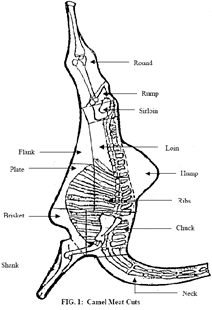 We shudder to think how PETA might react if the organization had access to Lahore’s bustling camel market, which buzzed with more activity than usual in the runup to Eid al-Adha:
We shudder to think how PETA might react if the organization had access to Lahore’s bustling camel market, which buzzed with more activity than usual in the runup to Eid al-Adha:
The camel traders who brought camels from different cities of southern Punjab and Sindh were sold like hotcakes on Friday evening. The traders too reduced the prices almost half as compared to a week ago. A camel with earlier price tag of Rs 100,000 or above was sold at Rs 40,000 to 50,000 while the highest price did not go beyond Rs 80,000 for a good-looking camel. However, some rare giant size camels were sold a few days ago at Rs 400,000 and above.
The prices further dropped late Friday night when traders were preparing for return to their hometowns and had parked trucks close to the animals to load back the animals. The sacrificial camels were seen driven with the cart all around the City particularly on roads leading to posh areas from where most buyers came. The camels were seen howling in the markets all around, creating sympathy for them but they were mercilessly beaten and driven by their owners in search of buyers and lucrative bargaining.
Despite the pronouncement of Pakistan’s Council for Herbal Physicians, we highly doubt that the meat of these sacrificial camels is an effective balm for hepatitis C. But we remain eternally intrigued by the purported cancer-fighting properties of camel urine.


Ell // Dec 3, 2009 at 7:52 am
We’re under camel siege!
http://www.guardian.co.uk/world/2009/nov/26/australia-thirsty-camels-animal-welfare
Brendan I. Koerner // Dec 3, 2009 at 11:08 am
Wow, that’s a lot of camels. And presumably no market for their by-products, right? Unless camel meat explains the odd taste of Vegemite.
Jordan // Dec 3, 2009 at 3:39 pm
Vegamite is just yeast. You actually use yeast extract in many forms of bacterial growth media. A coworker once told me that she found the smell of Luria broth somewhat comforting because her husband’s family is from England and she associates the smell of Marmite with home.